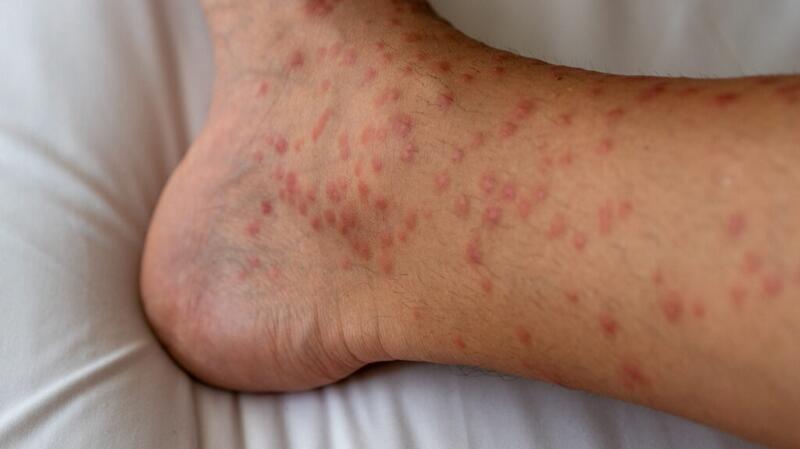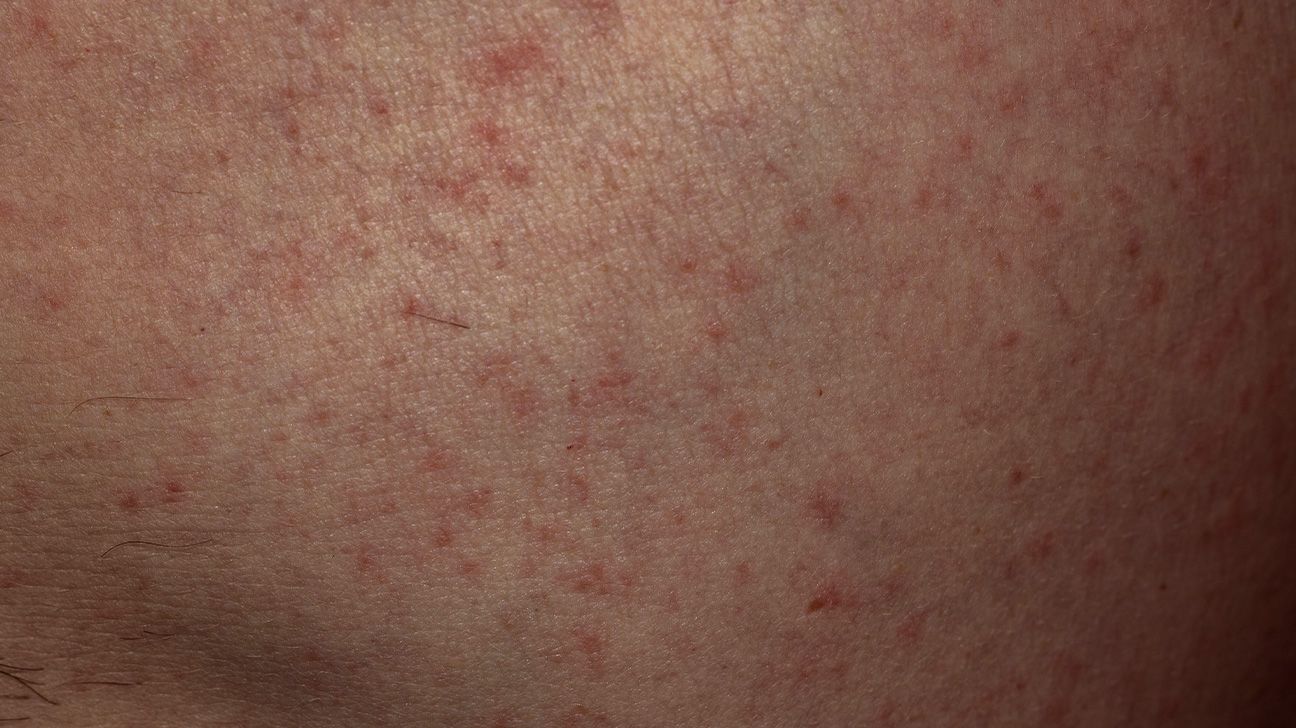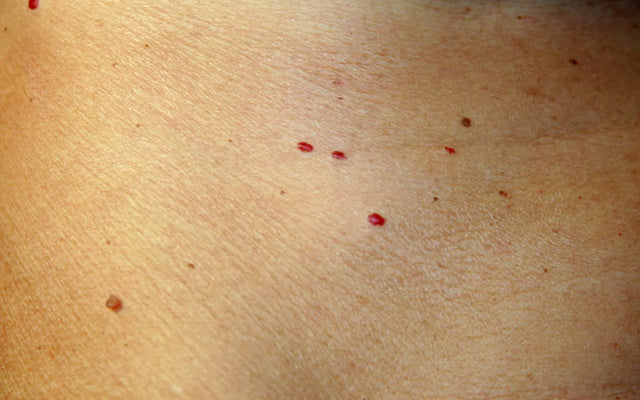Red dots appearing on your skin can be a common occurrence, and while many cases are harmless, they may also be a sign of underlying health conditions. These spots can vary in size, shape, and color intensity, and their causes can range from minor skin irritations to medical conditions that require attention. Let’s dive deeper into some of the potential reasons for these red dots and what they might mean for your health.
1. Petechiae and Purpura: When Blood Vessels Are Damaged
One common cause of small red dots on the skin is petechiae, tiny spots that form when small blood vessels, known as capillaries, burst and bleed under the skin. These dots can appear suddenly, often in clusters, and may look like a rash.
Purpura is a similar condition but refers to larger red or purple patches caused by bleeding under the skin. Both petechiae and purpura can result from a variety of factors, including excessive physical strain, certain medications, or conditions that affect the platelets in your blood.
While petechiae and purpura are not always a cause for alarm, they may signal an underlying issue, such as a platelet disorder or an infection. If you notice these spots alongside symptoms like fever, fatigue, or unusual bruising, it’s important to consult a healthcare professional promptly.

2. Cherry Angiomas: Harmless but Noticeable Red Bumps
Cherry angiomas are small, bright red bumps that often appear on the skin as people age. These raised spots are caused by clusters of tiny blood vessels near the surface of the skin.
The good news is that cherry angiomas are generally harmless. They don’t itch, hurt, or pose any health risks, although some people may choose to have them removed for cosmetic reasons. If you notice a sudden increase in the number of these spots or changes in their appearance, it’s a good idea to have them evaluated by a dermatologist to rule out other conditions.
3. Heat Rash: A Common Culprit in Warm Weather
Heat rash, also known as prickly heat, is a skin condition that occurs when sweat becomes trapped in sweat ducts. This can lead to small, red, itchy dots or even tiny blisters. Heat rash is especially common in hot and humid climates or after intense physical activity.
This condition is usually temporary and resolves on its own once your skin cools down. To prevent heat rash, wear loose-fitting, breathable clothing and try to stay in a cool environment. Applying soothing creams, such as those containing calamine, can also help relieve discomfort.

4. Allergic Reactions: A Trigger for Redness and Itchy Spots
Allergic reactions are another common cause of red dots or rashes on the skin. These reactions can be triggered by a variety of factors, such as certain foods, medications, cosmetics, or insect bites.
The red dots that result from an allergic reaction may be accompanied by swelling, itching, or even hives. In some cases, severe allergic reactions can lead to anaphylaxis, a life-threatening condition that requires immediate medical attention.
If you suspect an allergic reaction, try to identify and avoid the trigger. For mild cases, over-the-counter antihistamines or hydrocortisone creams can help alleviate symptoms. For more severe reactions, seek medical care without delay.
5. Folliculitis: Inflammation of Hair Follicles
Folliculitis is a skin condition that occurs when hair follicles become inflamed or infected, often due to bacteria, fungi, or ingrown hairs. This can result in small red dots that may be itchy, tender, or filled with pus.
Common triggers for folliculitis include wearing tight clothing, shaving, or spending extended periods in hot tubs or pools with poorly maintained water. While mild cases of folliculitis often clear up on their own, persistent or severe cases may require treatment with antibiotics or antifungal medications.
:max_bytes(150000):strip_icc()/cherry-angioma-e456f98ada45460db3aeba89281cf3e3.jpg)
6. Cellulitis: A Serious Skin Infection
Cellulitis is a bacterial infection that affects the deeper layers of the skin and underlying tissues. It can cause redness, swelling, and tenderness, often starting as a small red spot that rapidly spreads.
Unlike some other causes of red dots, cellulitis requires immediate medical attention, as it can lead to complications if left untreated. Treatment typically involves antibiotics, and in severe cases, hospitalization may be necessary.
If you notice a red spot that is painful, warm to the touch, or accompanied by fever or chills, seek medical care as soon as possible.
7. Impetigo: A Contagious Bacterial Condition
Impetigo is a skin infection caused by bacteria, often affecting children. It starts as red sores that may ooze fluid before forming a yellowish crust.
This condition is highly contagious and can spread through direct contact or by sharing personal items, such as towels or clothing. While impetigo usually isn’t serious, it does require treatment with antibiotics to prevent complications and stop the spread of infection.

8. Vasculitis: Inflammation of Blood Vessels
Vasculitis refers to a group of conditions involving inflammation of blood vessels. This can cause red or purple spots on the skin, which may be accompanied by other symptoms, such as joint pain, fatigue, or fever.
Vasculitis is often associated with autoimmune disorders, where the body’s immune system mistakenly attacks its own tissues. Because this condition can affect various organs, it’s important to seek medical evaluation if you suspect vasculitis.
9. Hemangiomas: Birthmarks from Blood Vessel Growth
Hemangiomas are harmless growths caused by an abnormal clustering of blood vessels. They are often present at birth or appear shortly afterward, commonly on the face, neck, or torso.
While most hemangiomas fade on their own over time, some may require medical intervention, especially if they grow rapidly, interfere with vision or breathing, or cause other complications.
When to Seek Medical Attention
While many causes of red dots on the skin are harmless and resolve on their own, there are instances where medical evaluation is necessary. If the red spots are accompanied by symptoms such as fever, pain, swelling, or difficulty breathing, consult a doctor immediately.
It’s always better to err on the side of caution when it comes to your health. A healthcare professional can help determine the cause of the red dots and recommend appropriate treatment if needed.

Prevention and Care
Preventing red dots on the skin often involves maintaining good hygiene, wearing appropriate clothing, and protecting your skin from irritants. Here are a few tips to keep your skin healthy:
- Avoid prolonged exposure to heat and humidity to prevent heat rash.
- Wear loose, breathable fabrics to reduce friction and irritation.
- Use sunscreen to protect your skin from harmful UV rays.
- Practice proper shaving techniques to minimize folliculitis.
- Avoid sharing personal items to reduce the risk of infections like impetigo.
By taking these simple steps, you can reduce the likelihood of red dots appearing on your skin and maintain overall skin health.
Red dots on your skin can have a variety of causes, ranging from harmless conditions like cherry angiomas to more serious issues like cellulitis or vasculitis. Understanding the potential causes and paying attention to accompanying symptoms can help you determine when to seek medical advice.
Remember, your skin is often a reflection of your overall health, so taking care of it is essential. If you’re ever in doubt about a change in your skin, it’s always best to consult a healthcare professional. Better safe than sorry!
